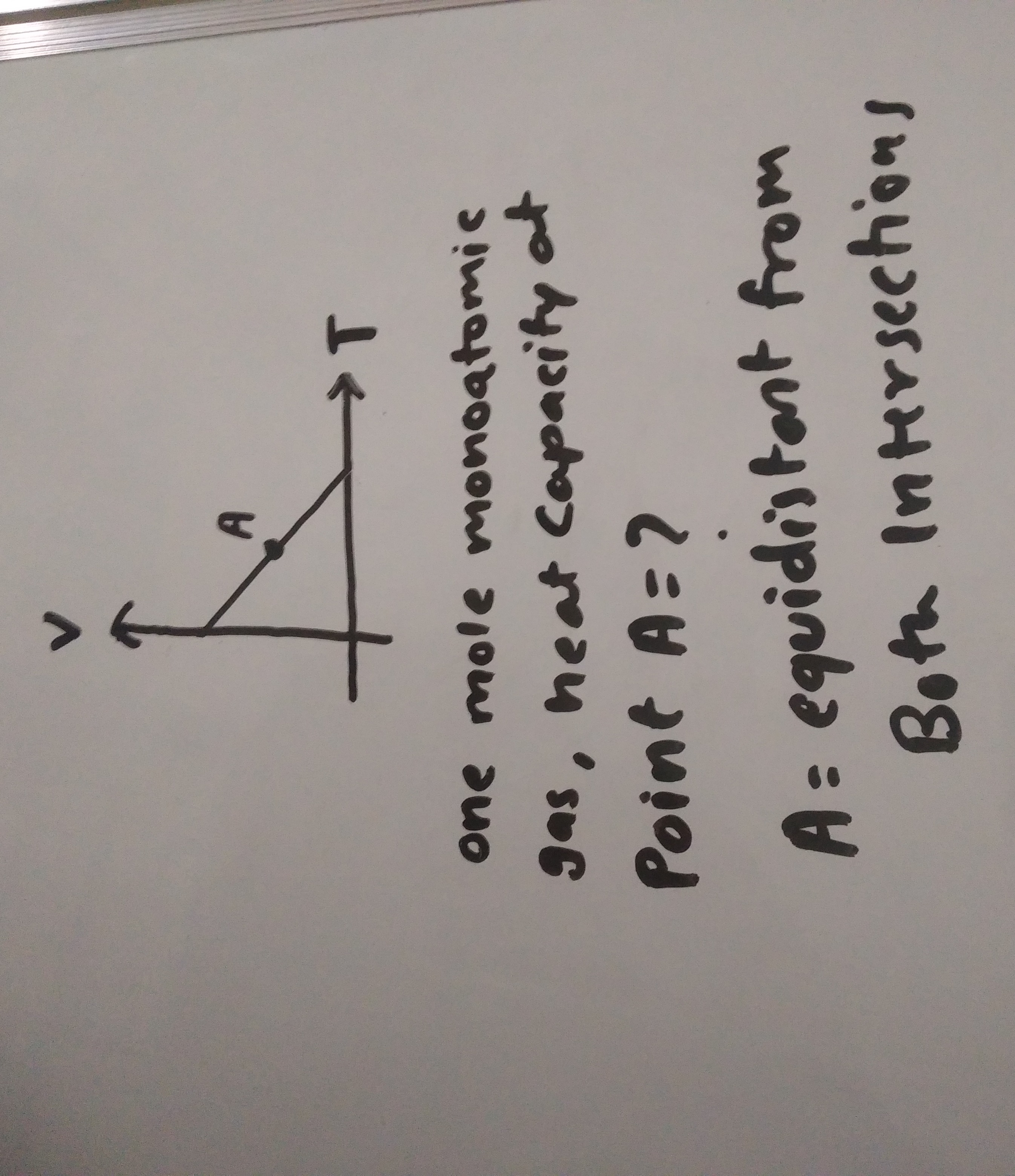Question
Question: $\text{one mole monoatomic}$ $\text{gas, heat Capacity at}$ $\text{Point A=?}$ $\text{A = equidis...
one mole monoatomic
gas, heat Capacity at
Point A=?
A = equidistant from
Both Intersections

R/2
Solution
The process is represented by a straight line in the V-T diagram. Let the equation of the line be V=mT+c. The line intersects the T-axis at point C (where V=0) and the V-axis at point B (where T=0). From the figure, the line has a negative slope and positive intercepts on both axes. Let the T-intercept be T0 and the V-intercept be V0. The equation of the line passing through (T0,0) and (0,V0) is T0T+V0V=1. So, V=−T0V0T+V0. Here m=−T0V0 and c=V0. The intersections are C=(T0,0) and B=(0,V0). Point A = (TA,VA) lies on the line, so VA=−T0V0TA+V0. Point A is equidistant from B and C. The distance squared from A to B is AB2=(TA−0)2+(VA−V0)2=TA2+(VA−V0)2. The distance squared from A to C is AC2=(TA−T0)2+(VA−0)2=(TA−T0)2+VA2. Since AB2=AC2, we have TA2+(VA−V0)2=(TA−T0)2+VA2. From the line equation, VA−V0=−T0V0TA. So, TA2+(−T0V0TA)2=(TA−T0)2+VA2. TA2+T02V02TA2=TA2−2TAT0+T02+VA2. T02V02TA2=−2TAT0+T02+VA2. Substitute VA=V0(1−T0TA). T02V02TA2=−2TAT0+T02+V02(1−T0TA)2. T02V02TA2=−2TAT0+T02+V02(1−2T0TA+T02TA2). T02V02TA2=−2TAT0+T02+V02−2T0V02TA+T02V02TA2. 0=−2TAT0+T02+V02−2T0V02TA. 2TAT0+2T0V02TA=T02+V02. 2TA(T0+T0V02)=T02+V02. 2TAT0T02+V02=T02+V02. Assuming T02+V02=0 (which is true since T0>0 and V0>0), we can divide by T02+V02. 2TA/T0=1⟹TA=T0/2. Now find VA: VA=V0(1−T0TA)=V0(1−T0T0/2)=V0(1−1/2)=V0/2. So, point A is (T0/2,V0/2).
The molar heat capacity for a process is given by C=CV+npdTdV. For 1 mole of monoatomic ideal gas, n=1 and CV=23R. Also pV=RT, so p=VRT. C=23R+VRTdTdV. The process is a straight line in the V-T diagram, so dTdV=m=−T0V0. At point A, T=TA=T0/2 and V=VA=V0/2. CA=23R+(V0/2)R(T0/2)(−T0V0). CA=23R+V0RT0(−T0V0). CA=23R−R. CA=21R.
